Browse our library of online white papers and guides.

The medical device industry is on the cusp of a significant regulatory shift as the FDA harmonizes the QSR with ISO 13486:2016. Is your organization ready? This white paper is your essential guide to navigating the transition from the FDA's QSR to the new Quality Management System Regulation (QMSR).
Whether you're ISO 13485 certified or primarily QSR compliant, this white paper provides invaluable insights to ensure a smooth transition to QMSR. Don't let the February 2026 deadline catch you off guard. Download our free white paper now and take the first step towards QMSR compliance.
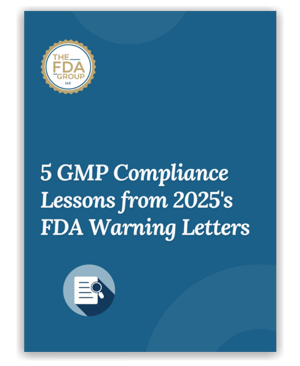
What can 85 warning letters tell you about your own compliance vulnerabilities? Quite a lot, it turns out. Our analysis of FDA drug product warning letters posted between January and December 2025 reveals where quality systems are breaking down—and what proactive manufacturers can do now to avoid becoming the next case study.
The patterns are clear: supplier qualification gaps, quality units with authority on paper but not in practice, lifecycle validation programs that exist in name only, and data integrity failures concentrated in specific regions. Perhaps most telling, 87% of these letters included the FDA's recommendation to engage an external GMP consultant—a signal that internal self-correction had already failed.
Download the guide to explore the top-cited regulatory deficiencies, practical recommendations drawn from our consultants' remediation experience, and self-assessment questions to pressure-test your own systems before regulators do.

What are problems turn up the most during audits? Over the past several months, we've conducted audits across GMP vendors, internal QMS reviews, supplier qualifications, mock PAIs, and GCP investigator sites—and the same familiar issues continue to appear.
This white paper distills the most common findings—spanning documentation and change control, training and investigation discipline, facility and lab readiness, and vendor oversight—into actionable insights you can use to pressure-test your own systems before regulators do.
Download the guide to explore real audit examples, key metrics across audit types, and a checklist of questions to evaluate your own compliance maturity. See how The FDA Group’s auditors are helping clients uncover and close gaps before inspection day.
.png?width=300&name=Making%20the%20Case%20for%20Staff%20Augmentation%20in%20the%20Quality%20Unit%20(2).png)
Struggling to fill QA roles? Facing growing compliance demands with a shrinking team? This white paper dives deep into the staff augmentation model—a flexible, fast, and cost-effective approach to building Quality capacity in FDA-regulated industries. Learn how leading life science companies are using this approach to overcome staffing challenges, execute critical projects, and maintain compliance continuity in the face of today’s workforce volatility.
Download the white paper to explore real-world case studies, a step-by-step breakdown of The FDA Group’s proven process, and a self-assessment to determine if staff augmentation is the right fit for your organization. Whether you need short-term coverage or long-term expertise, this guide helps you reimagine what a truly agile Quality team looks like.
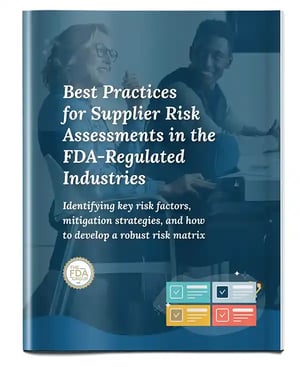
Outsourcing comes with regulatory responsibilities that fall on the company receiving the products or services. Our white paper offers guidance on identifying and mitigating risks associated with suppliers.
Learn to identify and manage supplier risks in medical and pharmaceutical domains, while maintaining regulatory compliance. Get insights into effective risk mitigation strategies, including creating a dynamic risk matrix. Evaluate risks based on factors like product quality, previous audits, and validation processes. Enhance your supplier management practices with these indispensable best practices.
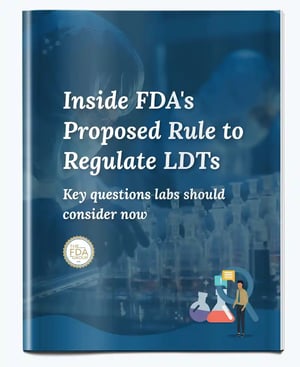
The FDA proposed a new rule for laboratory-developed tests (LDTs) in Fall 2023. It would end its policy of enforcement discretion, making LDTs subject to regulatory requirements as medical devices. Labs impacted by this change many have as little as one year to meet Stage 1 requirements once the final rule is issued. They will need to start filing medical device reports (MDR) and notices of correction and removal.
To help labs prepare, we have identified 22 questions they should consider. These cover reporting mechanisms, staff awareness, documentation, quality of reports, decision-making process, and more. Download the free guide to learn the questions to consider to prepare for the end of discretion enforcement of LDTs.
%20(1)-1.png?width=300&name=Preparing%20for%20Computer%20System%20Validation%20(CSV)%20(1)-1.png)
Ever struggle with the complexities of computer system validation? This guide gives you an entire playbook of CSV best practices.
Senior validation engineer and consultant Rashida Ray covers how to use process mapping to plan for CSV effectively; understanding how data is acquired, stored, and used within the system to ensure data integrity; how to host cross-functional team meetings to help to break down silos and foster better communication and collaboration, and much more.
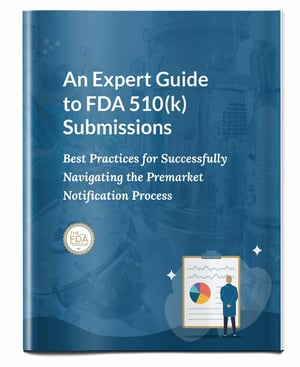
Are you looking to bring a medical device to market that’s equivalent to a device currently on the market but don’t know where to start with the FDA 510(k) submission process? Do you want to avoid costly and time-consuming mistakes in your premarket notification?
This white paper provides clear, expert-informed guidance on 510(k) submissions. Knowing device manufacturers routinely seek the assistance of knowledgeable regulatory professionals when preparing 510(k) submissions, this guide has been crafted with the help of Trey Thorsen, MS, RAC.
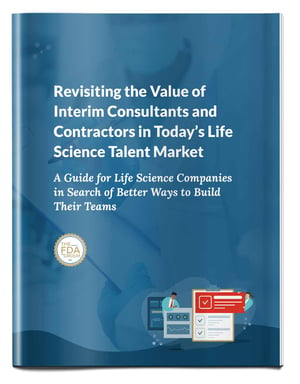
New and long-standing hiring challenges have breathed new life into interim full-time contracting, a model that’s by no means new but worth revisiting, given how well it’s suited to address these challenges.
In this paper, we explore how this model enables a range of benefits, such as allowing employers to refine the job descriptions while an interim contractor or team of contractors tackles the project work immediately.
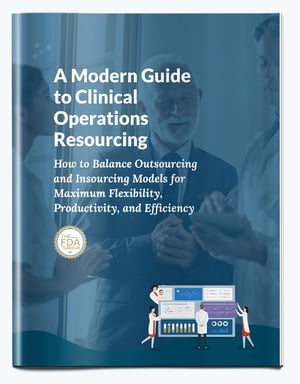
Facing an intensely competitive talent market, and growing pressures around productivity and cost, clinical teams are reconfiguring their R&D operations and organizational structures to get more done in less time with better outcomes.
While full-service outsourcing isn’t going anywhere, especially as startups
and small players continue to enter the market, companies experiencing rapid growth and those with more extensive R&D functions and are moving beyond the “make versus build” or “outsource or not” questions to ask, “what is the best outsourcing, insourcing, or hybrid model for this situation?”
This white paper explores the advantages and disadvantages of various clinical resourcing models in the current clinical landscape. We offer several points to consider when framing the question in context. Think of this paper as a starting point for informed decision-making—a playbook for asking the right general questions at the outset of a project to determine the best path forward.
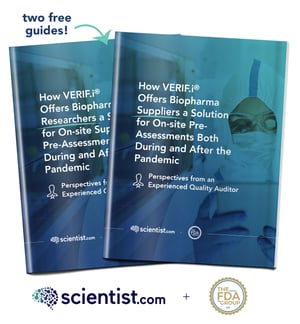
Supplier pre-assessments, while a critical part of the R&D lifecycle, have long been the source of headaches for biopharma companies and suppliers alike. The combination of understanding applicable regulations, developing assessment criteria, and managing the complex logistics of conducting or hosting largely similar pre-assessments can be exhausting and frustrating for everyone involved. A global pandemic has only amplified all of these challenges.
This paper briefly unpacks both the long-standing and more recent problems plaguing the supplier pre-assessment process and presents a new solution from an experienced auditing professional’s perspective.
We explore how Scientist.com’s VERIF.i program works to address each of these challenges by establishing a global standard for supplier pre-assessments, thereby streamlining the process, reducing costs, and saving time for biopharma organizations.
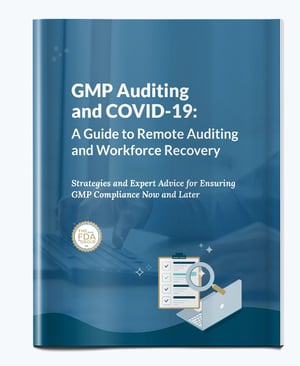
The coronavirus (COVID-19) pandemic has disrupted routine in-person auditing and official inspection activities throughout the regulated life science industry.
To avoid compounding delays due to canceled or deferred audits, firms are increasingly turning to remote or “virtual” audits to maintain their assurance activities until normal operations can resume.
This guide examines the challenges of remote auditing and offers strategies and best practices for overcoming them throughout each phase of the assessment process: planning, document review, process review, facility review, interviews, and closing meetings.
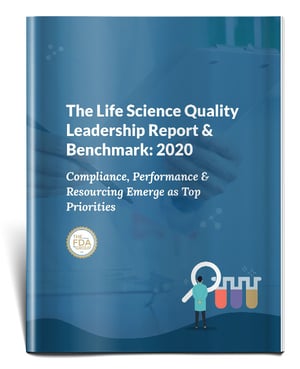
Life science quality leaders operating have a lot on their plates in 2020. We recently surveyed 29 of them working inside organizations large and small to answer the critical questions:
What goals are quality leaders working to achieve in 2020? Which challenges stand in their way? What are they doing to overcome these challenges and stay competitive?
In this report, you'll get a unique look into how quality leaders are preparing for the future through the decisions they're making today. You'll come away with a clear picture of the emerging trends you can use to benchmark your own actions in 2020 and beyond. We explore trending quality objectives, challenges, resourcing, and more.
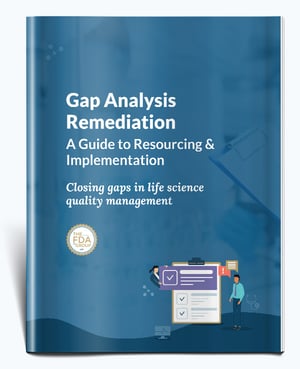
Building a team for a remediation project after a gap analysis means asking critical questions. How much work is really involved? Do we have the right skillsets? Do we need to augment our staff to get this done right and on time?
This guide offers an expert strategy for planning the resources you need to make remediation successful. Learn where life science quality departments get stuck, the signals of resource-heavy work, models for implementation, and more.
You'll get expert advice on conducting an effective gap analysis, tips for turning your gap analysis report into a remediation plan, a strategy for planning project resources, and other useful insights.
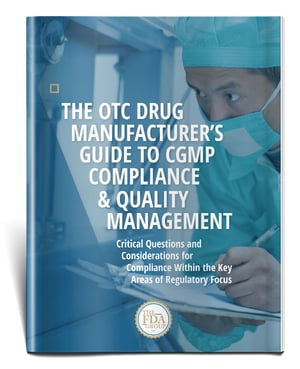
The U.S. FDA and other regulating bodies are increasingly inspecting and citing manufacturers of nonprescription drug and health products for current Good Manufacturing Practice (CGMP) violations.
Many of these deficiencies underscore widespread underlying inadequacies in implementing and maintaining a robust Quality Management System (QMS).
This guide offers manufacturers of OTC and similar health products actionable summaries and expert analyses of common CGMP compliance and QMS problems along with key questions for assessing compliance accordingly.
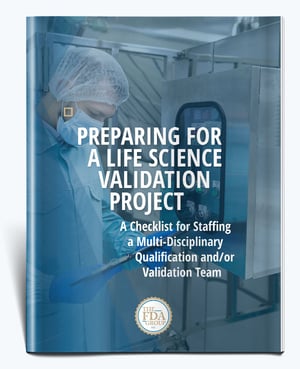
Building a multi-disciplinary team to support Qualification and/or Validation of new or modified facilities, systems and processes has become a CGMP expectation of the FDA and many other regulatory agencies in ICH markets.
Carrying out these activities across all stages of a product lifecycle continues to be one of the top challenges for life science companies.
This guide will help you overcome these challenges and save valuable time locating and evaluating Validation specialists who can see your program through to success on time and on budget.
We’ve broken down the significant qualities and abilities to look for in a quality candidate and compiled them into an easy checklist. While each project brings unique needs, this guide can serve as a helpful resource for identifying the most important traits in a specialist based on the needs you face.
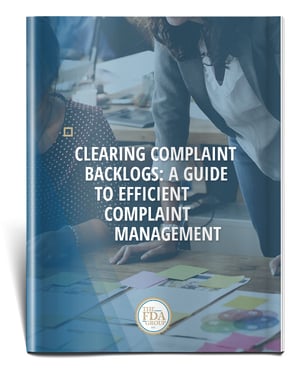
It's not uncommon for FDA-regulated manufacturers to find themselves without the resources or processes to efficiently manage product complaints. When the resulting backlog isn’t cleared quickly and completely, the issue can compound into serious safety and compliance problems.
This guide dives deep into the common causes of complaint backlogs and offers adaptable, generalized strategies for remediation.
These scenarios and solutions were compiled by Alan Greathouse, a regulatory compliance expert with extensive experience in identifying the causes of complaint backlogs and working to develop efficient and effective ways to remediate them in companies large and small, all over the world.
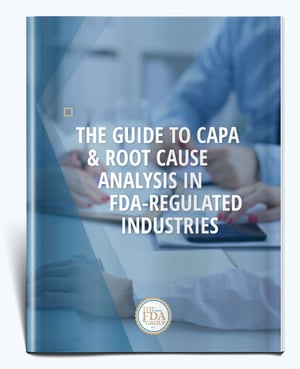
“Insufficient corrective and preventive action procedures” (CAPA) has consistently topped the list of most common FDA inspectional observations within the medical device industry since fiscal year 2010.
Its prevalence as the top problem year after year makes it clear that many device companies have issues, both known and unknown, within their CAPA programs. While the immediate compliance threats are obvious, less so are those that leave companies vulnerable to serious quality system issues that can grow and metastasize under the radar of their quality management system, putting both patients and their business at risk.
This white paper tackles CAPA from a slightly different perspective than most are used to seeing in industry publications and seminars. We’ve gathered insights from quality and compliance experts who have seen it all and fixed it all firsthand. In addition to exploring the solutions that have proven to be effective in the field, we’ll also examine one, if not the, most pivotal component of CAPA: root cause analysis.
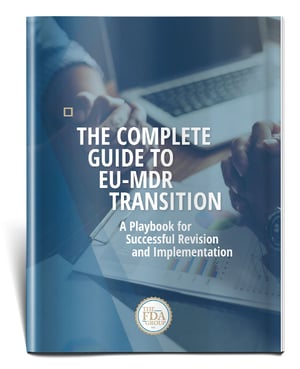
The release of the European Medical Devices Regulation (EU-MDR) has put significant pressure on medical device companies to closely scrutinize the new regulations, assess the impact on their own organization, and implement compliant processes and procedures accordingly.
This white paper presents key regulatory changes and a clear and concise process for structuring your transition process no matter how far along your organization is.
Inside you'll find a brief overview of the basics of the EU-MDR, focusing specifically on key changes as well as a strategy for planning and scoping your EU-MDR transition program. We cover the essentials of conducting a thorough gap analysis specific to EU-MDR transition and offer insight into how to scale your transition program to encompass the entire enterprise and the key steps of implementing an EU-MDR transition program.
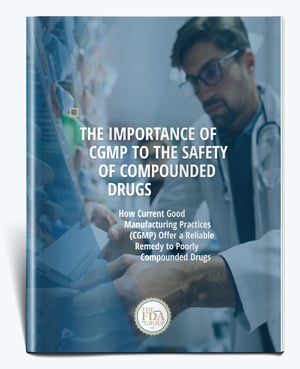
While many pharmacists see CGMP as having unduly risen the bar of compliance from what they have been accustomed to under SBOP, proper implementation should not be seen as a regulatory burden when compared to the costs of noncompliance––a point made clear in 2012 when improper compounding at the New England Compounding Pharmacy sparked an outbreak of fungal meningitis which resulted in 64 deaths, hundreds of injuries, and serious criminal charges.
This white paper presents a critical analysis of the importance of CGMP to the safety of compounded drugs.
This white paper offers evidence based on the activity of the (FDA) in just one year (2016–2017) that adoption of some of the basic tenants of CGMP by compounding pharmacies have not been taken seriously or taken hold of as quickly as they should have. It also offers Reasons why the absence of elementary practices such as the implementation of a quality management system (QMS), founded on the principal of good documentation practice (GDP), have been cited with continuous and increasing frequency.
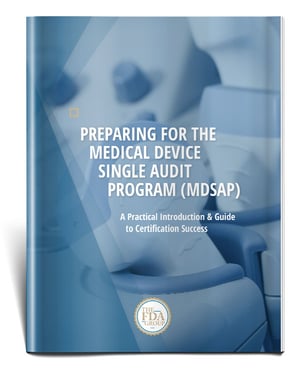
The Medical Device Single Audit Program (MDSAP) is a global initiative designed to harmonize regulatory efforts around the world. But despite looming deadlines, comparatively few medical device companies have a meaningful understanding of the advantages (and disadvantages) of pursuing MDSAP certification and how to prepare accordingly.
We've compiled insights from experts who have firsthand experience helping device manufacturers prepare for the MDSAP and compiled them into this handy white paper.
You'll learn the basics of the MDSAP, how the new point-based grading system works, which kinds of medical device companies stand to benefit from the MDSAP most, what to consider before pursuing MDSAP certification, and how to prepare for success before auditors arrive.
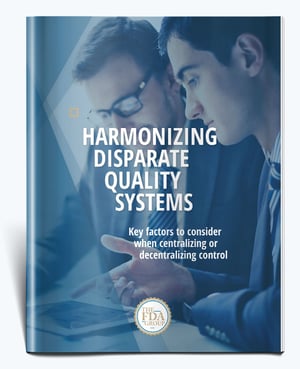
In 2015 and 2016, there were over 150 major medical device company acquisitions and mergers, and that trend has only accelerated in 2017. These events often bring important questions regarding quality that can have far-reaching consequences if not addressed thoroughly by both department and company leadership.
We've compiled insights from experts with firsthand experience helping device manufacturers make informed decisions when integrating quality systems and performing the due diligence necessary to ensure compliance in both the short and long term.
You'll learn factors to consider when deciding whether an incoming quality system should be retained or changed, a process to follow to ensure any quality system gaps are revealed and addressed and important regulations that have a direct impact on the process. We also highlight the areas incoming quality systems are prone to noncompliance and how an experienced third-party consultant can be a valuable asset during the process.
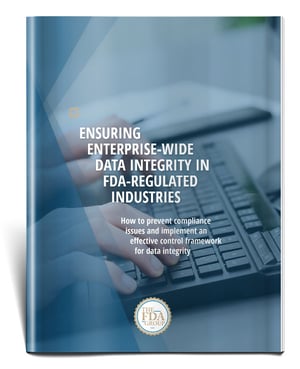
Data integrity issues are among the most significant compliance problems manufacturers struggle with today.
All too often, the scope of data integrity is misunderstood and oversimplified. Managing data and the systems that govern it stretch far beyond the IT department to encompass C-level executives and support groups in the areas of engineering, manufacturing, and quality. It requires a company-wide commitment to quality management that starts at the top.
This white paper offers a purely practical perspective on what data integrity is and how to mitigate data-related issues by developing and implementing a sound control framework. We'll also offer solutions to common data integrity problems.
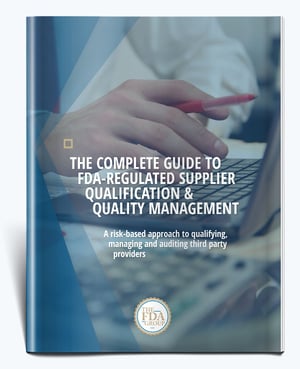
To the FDA, suppliers and other third-party vendors are an extension of your organization, making regulatory compliance your responsibility.
Outsourcing has become a global phenomenon among FDA-regulated manufacturers, making it absolutely critical to qualify new suppliers and manage quality on a routine basis.
This guide offers a step-by-step process for building better relationships with qualified suppliers and establishing a risk-based approach to supplier quality management. Inside, you'll find a summary of key regulatory requirements for supplier management, the formula for crafting an effective quality agreement and tips for working with third-party professionals when planning and running supplier audits.

The regulatory environment is in a state of transition. New technologies, growing cost pressures, and quickly-shifting consumer expectations are just a few of the factors driving changes in medical device manufacturing and regulatory compliance both domestic and abroad.
We've gathered the top FDA trends and developments for 2016 into this go-to guide along with advice from industry experts and on how these initiatives will affect medical device companies large and small.
We've included actionable summaries of the top ten FDA initiatives for medical device companies in 2016, key takeaways from recent FDA Guidance documents, and advice from expert consultants.
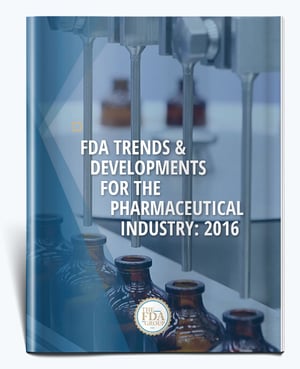
The regulatory environment is changing fast. New technologies, growing cost pressures, and quickly-shifting consumer expectations are just a few of the factors driving changes in drug manufacturing and regulatory compliance both domestic and abroad.
We've gathered the top FDA trends and developments for 2016 into this go-to guide along with advice from industry experts and on how these initiatives will affect pharmaceutical companies large and small.
We've included actionable summaries of the top eight FDA initiatives for pharmaceuticals in 2016, key takeaways from recent FDA Guidance documents, and advice from expert consultants.
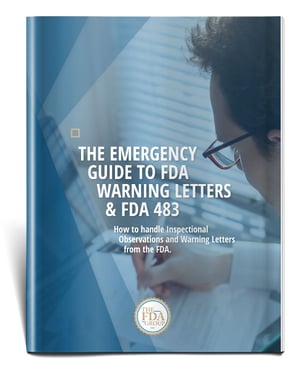
Receiving an FDA Warning Letter or Form 483 requires companies take immediate action to resolve issues and communicate those fixes to regulators within 15 business days.
Failing to respond or submitting an inadequate response can lead to enforcement actions that may threaten your ability to produce and market products.
This guide lays out the key steps to take after receiving an FDA Warning Letter or FDA 483 including the key elements of Corrective and Preventative Action Plans (CAPA), tips from experts on crafting an effective response, and how third-party experts can help fill the gaps and assist you through the process.
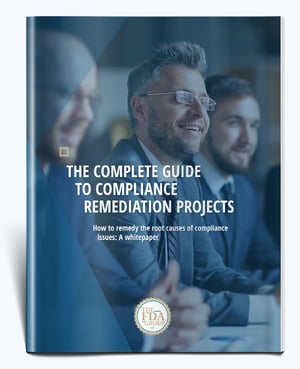
As regulations tighten on the pharmaceutical industry, compliance issues pose a major threat to manufacturers throughout every FDA-regulated industry.
When issues do arise, it’s absolutely crucial to take action with a remediation project designed to identify and remedy the root causes of the problems at hand.
Our guide to remediation lays the groundwork for an effective remediation plan aimed specifically at addressing the root causes of compliance issues.
Proprietary talent selection of former FDA and industry professionals amplified by a corporate culture of responsiveness and execution.
US Toll-Free: 1-833-FDA-GROUP
International: +001 508 926 8330
